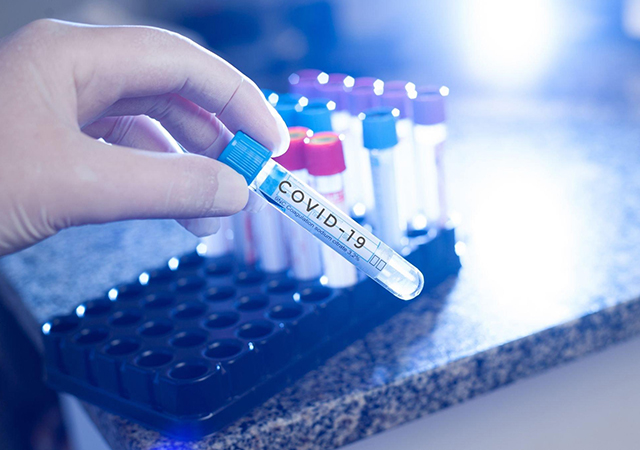
COVID-19 testing is a crucial component of efforts to control and manage the spread of the virus. Testing helps identify individuals infected with the SARS-CoV-2 virus, which causes COVID-19, enabling prompt isolation and treatment to prevent further transmission. There are several types of COVID-19 tests, each serving specific purposes:
1. Purpose: Diagnostic test to identify current infection.
- Method: Collects a nasal or throat swab.
- Processing Time: Results may take a day or more.
- Accuracy: High sensitivity and specificity.
2. Antigen Test (Rapid Test):
- Purpose: Diagnostic test for current infection, providing quicker results.
- Method: Collects a nasal or throat swab.
- Processing Time: Results are typically available in less than an hour.
- Accuracy: Generally less sensitive than PCR, especially in asymptomatic individuals.
3. Antibody Test (Serology Test):
- Purpose: Indicates past infection and immune response.
- Method: Requires a blood sample.
- Processing Time: Results are available in a day or two.
- Accuracy: May not detect early infections; more useful for assessing past exposure.
4. At-Home Testing Kits:
⦁ Purpose: Allows individuals to collect samples at home.
⦁ Method: Typically involves nasal or saliva sample collection.
⦁ Processing Time: Results are sent to a lab, and the time can vary.
⦁ Accuracy: Similar to PCR tests if properly collected.
5. Surveillance Testing:
⦁ Purpose: Regular testing of specific populations, such as healthcare workers or students, to monitor the prevalence of the virus.
⦁ Frequency: Periodic testing even in the absence of symptoms.
6. Travel Testing:
- Purpose: Some countries require proof of a negative test for entry.
- Timing: Specific requirements for when the test should be taken before travel.
- Purpose: Allows individuals to perform tests on themselves.
- Method: Follows specific instructions for sample collection (nose, throat, or saliva).
- Availability: Subject to regulatory approval and may vary by location.
8. Viral Genomic Sequencing:
- Purpose: Identifies specific variants of the virus.
- Importance: Helps monitor the emergence of new variants.
Testing Locations:
- Testing Sites: Many countries, regions, and healthcare facilities offer designated testing sites.
- Pharmacies and Clinics: Some pharmacies and clinics provide testing services.
- Mobile Testing Units: Mobile units may travel to various locations for testing.
Considerations:
- Symptomatic vs. Asymptomatic Testing: Testing may be recommended for individuals with symptoms or those without symptoms but with potential exposure.
- Quarantine and Isolation: Positive results typically lead to recommendations for quarantine or isolation.
- Follow-Up Testing: In some cases, follow-up testing may be necessary to confirm results or monitor recovery.
Testing is a critical tool in the overall strategy to control the spread of COVID-19. Individuals should follow public health guidelines, including testing recommendations, to help curb the impact of the virus.1.
What will happen if I go to the emergency department?
The staff in the emergency department will do an exam. They will also run tests to try to find the cause of your pain. But don’t be surprised if you do not find out right away why you have pain. The cause of chest pain is not always easy to find. Even so, doctors can usually tell if your heart is in trouble.
Some tests are done right away in the emergency department. The goal is to figure out as quickly as possible if something serious is causing your chest pain. Other tests are done after this, in the hospital.
Tests might include:
This test measures the electrical activity in your heart . It can help doctors find out if you are having a heart attack.
- Electrocardiogram (“ECG”) – This test measures the electrical activity in your heart . It can help doctors find out if you are having a heart attack.
- Blood tests – During a heart attack, the heart releases certain chemicals. If these chemicals are in your blood, it might mean you are having a heart attack.
- Chest X-ray – This can show some of the problems that can cause chest pain.
- Stress test – During a stress test, you might be asked to run or walk on a treadmill while you also have an ECG . Physical activity increases the heart’s need for blood. This test helps doctors see if the heart is getting enough blood. If you cannot walk or run, your doctor might give you a medicine to make your heart pump faster.
- Cardiac catheterization (also called “cardiac cath”) – During this test, the doctor puts a thin tube into a blood vessel in your leg or arm. Then, they move the tube up to your heart. Next, the doctor puts a dye that shows up on X-ray into the tube. This part of the test is called “coronary angiography.” It can show whether any of the arteries in your heart are clogged.
- Echocardiogram – This test uses sound waves to create an image of your heart as it beats. During a heart attack, not all parts of the heart pump normally.
- CT scan – This is a special kind of X-ray. Your doctor might use this to look at the blood vessels going to your heart.
